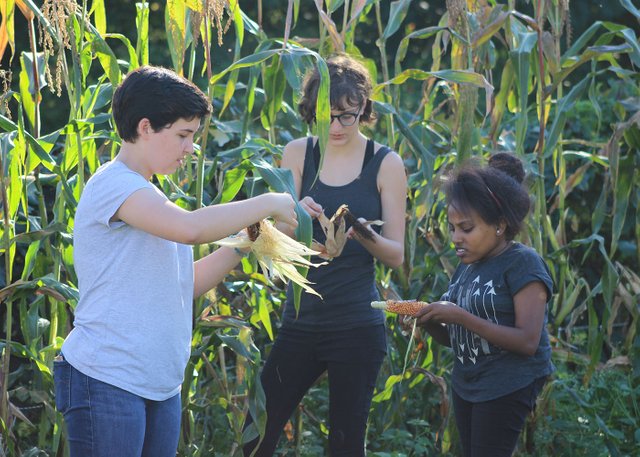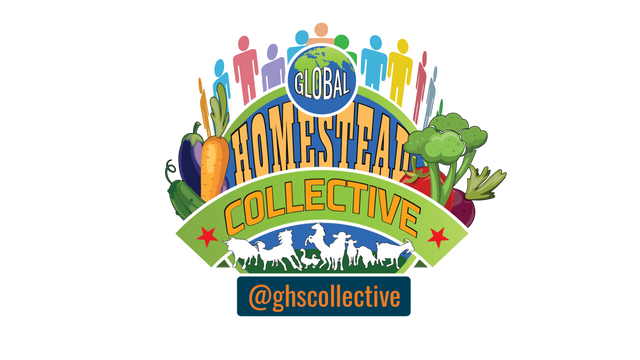Still pretty sick, but my husband found this article that I feel is worth spreading around. Cheetah will get me, I know! What a different world this would be, if this was the standard instead of the exception!

Founded in 1837 to serve the children of Quaker families, Olney Friends School has always had a farm program and students have been involved in its operation to varying degrees.
Photo courtesy of Mark Hibbett
The High School Where Learning to Farm Is a Graduation Requirement
The nation’s first USDA-certified organic campus integrates farm work and food production into every aspect of student life.
Mary Ann Lieser posted May 09, 2018
A group of teens gathers quietly in the predawn darkness. Dressed in warm clothing, they meet before breakfast to help capture and pack broiler chickens to be taken to a slaughterhouse. They fed, watered, and watched the birds grow; now they prepare them for their final trip. Eventually, the birds will return as meat and be cooked for the teens to eat.
High school students at Olney Friends School, located on 350 acres near Barnesville, Ohio, witness the cycle of birth and death time and again during their four years on campus. Founded in 1837 to serve the children of Quaker families, Olney has always had a farm program and students have been involved in its operation to varying degrees.

Photo courtesy of Mark Hibbett
During the past decade, Olney has integrated farm work and food production into every aspect of student life, from the barn to the kitchen to the classroom. In 2015, Olney became the nation’s first USDA-certified organic campus.
“Olney has had conservation practices to protect the environment in place for a hundred years,” says Don Guindon, farm manager. Guindon spent his childhood on the school farm, where his father served for decades in the position he now holds. He’s continued the sustainable practices—the use of crop rotation, cover crops, and contour plowing—that help maintain soil fertility and combat erosion. The farm also produces and uses about 40 tons of compost annually, utilizing manure and kitchen waste from the school as well as the autumn leaves gathered by the nearby town.
The Olney school farm has 52 beef cattle, eight goats, 150 laying chickens, and as many as 800 meat chickens. Students fatten a varying number of feeder pigs each year, produce hay for their livestock, and grow a wide variety of fruits, vegetables, and herbs. Constantly looking to diversify, they have recently added beekeeping to their repertoire—they currently have two active hives, and hope to have five later this year.
One week the farmers might lecture the biology class about artificial insemination. The next week the class might visit the greenhouse to help pollinate lemon trees by hand to provide a bigger harvest. An art class is working on designs to remodel a portion of the greenhouse. Farm skills are well integrated into the classroom.
The school has a diverse student body with many international students—30 percent of the student body—who speak English as a second language. Most of Olney’s approximately 50 students live on campus full time. The cafeteria serves three meals a day, seven days a week and manages to use food that derives about 40 percent from the farm or local area.

Photo courtesy of Mark Hibbett
The staff is looking at ways to nudge that number up by using homesteading practices to preserve more of the harvest. Mark Hibbett, assistant farm manager, is exploring possibilities: using the farm’s cabbage to make kimchi, using strawberries to make preserves, and using eggs to make noodles. And he’s looking for ways students can be involved in each step.
Olney already adjusts the farming schedule to maximize the possibilities for student participation. Some crops are planted late so the teens, who are gone over summer break, can help with the harvest when they return to campus.
Freshman Izraa Rosa grew up in a vegan family and says his parents appreciated knowing that the food at Olney is locally sourced and pesticide-free. For Rosa, who’s from Cleveland, the biggest benefit of the farm program is that he’s nudged out of his comfort zone. “I grew up in the city, where my friends and I were careful not to get our shoes scuffed up. Now I get my hands dirty, and I love it. I’m more open-minded and open to new experiences.”
Adam Dyer, the newest member of the farm staff, says that “any time students help with morning chores, they realize how much work goes into everything. Those eggs don’t just appear on our plates at breakfast. Someone has to come down at 6 o’clock and collect them.”
Olney has always had a strong farm identity, but the school’s goal is not necessarily to graduate future farmers. Graduates go on to four-year colleges, and few if any work in agriculture later. “Our goal is well-rounded citizens who are smart consumers with social awareness. The farm is a great place to absorb lessons in the complexity of sustainable systems,” Guindon points out.

Photo courtesy of Mark Hibbett
One of the most popular ways to absorb those lessons at Olney is to help tend its goats. When the babies are born, students watch the mothers clean them, then they make sure the babies are moving and active and getting milk. “When the students are there for every step of the process, they own it,” Guindon says. Six does recently gave birth to 13 kids, and a crew of 19 students trained as goat midwives took turns spending nights in the barn, watching for signs of early labor.
Antonia Sigmon is a senior who has been involved in as many farm activities as possible during the last four years, from picking potatoes to clipping goats’ hooves. During the winter of her freshman year, many of the goat kids were born, and she remembers how magical it seemed walking in the snow and the moonlight down to the barn, where she took the midnight shift to bottle-feed them.
“I’ve been excited about working with the animals ever since,” she says. “And I like being in contact with the land and everything that’s growing.”
Olney still honors its Quaker roots. Twice a week the students participate in traditional waiting worship, when the school gathers for about 20 minutes to reflect quietly as a group. Weather permitting, evening collection might be held in the orchard when the trees are in bloom, in the hay mow when the first cutting of hay is fragrant, or in the barn where the sound of the cows’ breathing is audible. And evening collection is sometimes held in the goat barn where the midwife crew brings the young goats out to play.
